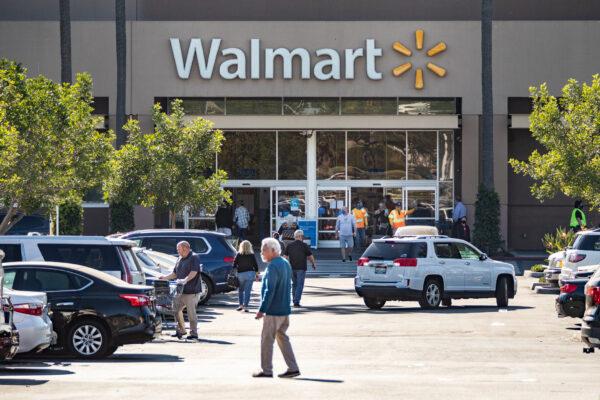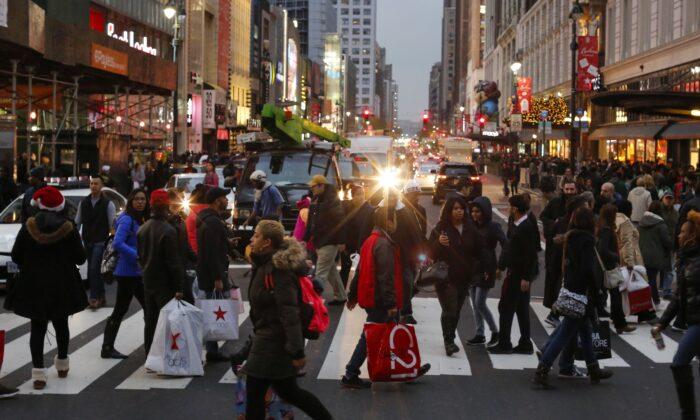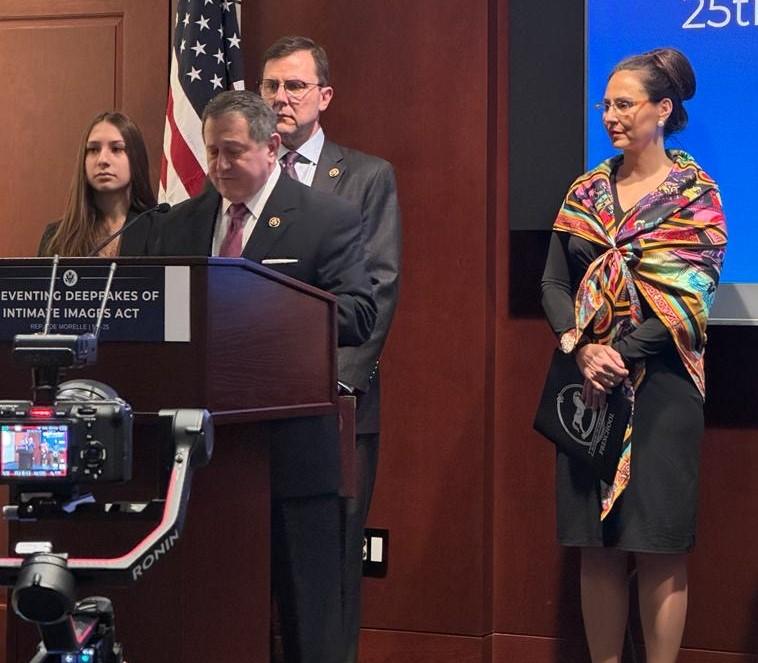There were many polls and surveys from this past summer and fall which forecast that consumers, although anxious about inflation, would spend more on the holidays this year than last.
Those polls and surveys are bearing out as on the money.
Reported in the survey was that the “economic environment is weighing heavily on consumers’ minds, with 74 percent of respondents saying the financial aspect of the holiday season makes them anxious, compared to 66 percent who said the same in 2021.”

And yet, even with the concerns about the economy, “82 percent remain confident in their ability to manage their spending.”
And there was plenty of positive holiday financial news to bolster consumer confidence.
“Black Friday is set to go off with a bang, with search intent kicking off as early as Aug. 26 this year—13 days earlier than 2021 (much like we saw with holiday gifting search intent),” Captify reported on Oct. 31.
“Not only was intent starting earlier in 2022, but the volume of searches is up too, driven by interest in discounts, with searches surrounding deals and promotions by 19 percent [year-on-year growth].”

Now, two weeks into December, with actual recorded numbers coming in, it is evident that Americans are spending at a level they did prior to the arrival of Covid-19, the pandemic that delivered to the nation its biggest hit since the Great Depression.
“A record 196.7 million Americans shopped in stores and online during the five-day holiday shopping period from Thanksgiving Day through Cyber Monday,” as reported in the year’s edition of the survey that the National Retail Federation and Prosper Insights and Analytics have co-produced since 2003.
“The total number of shoppers grew by nearly 17 million from 2021 and is the highest figure since NRF first started tracking this data in 2017.”

Adobe used its technology platform Adobe Analytics to cull the data and analyze online consumer transactions “covering over 1 trillion visits to U.S. retail sites; 100 million SKUs, and 18 product categories.”
Included in the Adobe findings were that on Cyber Monday consumers “spent a total of $11.3 billion, representing a 5.8 percent growth year-over-year,” making it the biggest shopping day of “all time.”
The reports also showed that Cyber Monday “saw consumers spend $12.8 million every minute during the peak hour, from 8 a.m. to 9 p.m. Pacific Time.”
Any assessment of the strength of the holiday economy must include the performance of the pillars of retail commerce: Amazon and Walmart.
Kiplinger, the publisher of business analysis and forecasts, extolled Walmart and its recent performance, including for Black Friday.
Paying for Holiday Purchases in 2022
How are people making their purchases and budgeting this holiday season?A Forbes Adviser survey by One Poll found that 42 percent of Americans will purchase with credit cards, and of that number, 33 percent plan to fully pay off their credit card balance after Jan. 1.
The Forbes survey also reported 15 percent of consumers will open a new credit card account to prepare for holiday buying, with a key incentive for doing so is to earn rewards.
In the Rearview Mirror
In February of this year, MoneyGeek conducted a survey to collect information on “how much Americans spent,” during the 2021 holiday season, and “how they financed that spending, and how they feel about it now.”Among the results of the survey were that almost “one in five [19 percent] said they regretted how much they had spent over the holiday season,” with “7 percent regretting not spending more”—and that women “were 35 percent more likely to regret spending too much than men, and people aged 25–44 had the most holiday spending regret in general.”
And there is this telling, and arguably predictable, finding from the survey: “The higher a respondent’s credit score, the less regret they expressed over holiday spending.”






Friends Read Free